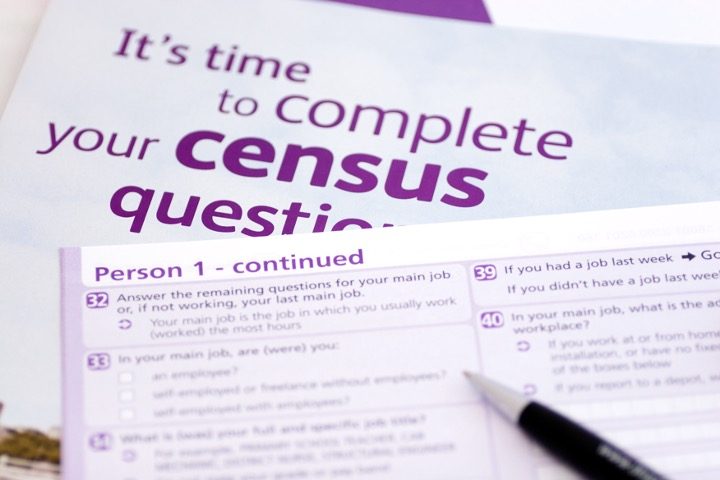
The next census will feature a notable update in the race and ethnicity portion of its questionnaire. “Hispanic or Latino,” along with “Middle Eastern or North African (MENA),” will now be listed as a race/ethnicity that respondents to the census may select instead of having to choose another racial category such as “white” or “black.”
NBC News reported the change. “These updated standards are going to help us create more useful, accurate and up-to-date federal data on race and ethnicity,” said a representative of the Office of Management and Budget (OMB). “And these revisions will enhance our ability to compare information and data across federal agencies and also understand again how our federal programs are serving a diverse America.”
The modifications took effect on Thursday, and agencies have 18 months to formulate compliance plans, followed by a maximum of five years to implement those plans, although some agencies may opt to do so sooner.
The latest standards are based on findings from the 2020 census, which revealed that a majority of Hispanics opted not to identify their race as white, black, or Asian. Instead, they were more inclined to select “some other race” on the decennial survey, or to indicate “two or more races.”
The two-part question is perplexing, and analysis by Pew Research Center highlighted that since 1980 there has been a rise in nonresponse to the race question. In the 2020 census, 42 percent of Hispanics opted for “some other race,” while a third selected two or more racial groups, and 20 percent identified as white.
The new Hispanic and Middle Eastern categories will have subcategories from which respondents may choose to more specifically indicate their ethnic origins. For Hispanics and Latinos, these include “Mexican, Puerto Rican, Salvadoran, Cuban, Dominican, Guatemalan and other Central or South American or Spanish culture or origin.”
For Middle Easterners, the subcategories are “Lebanese, Iranian, Egyptian, Syrian, Iraqi, Israeli etc.”
The change is significant for Middle Easterners, who have long been somewhat in limbo by the phrasing of the question, with many opting for the “other” choice in the race area.
These revisions mark only the second update by the federal government to categories for data concerning the American population. The update, the first since 1997, aims to enhance the standards utilized by federal government entities for the census and other agencies, with the intention of more accurately reflecting the nation’s evolving multicultural identity.
Furthermore, “derogatory and racist” labels, such as “Negro” and “Far East,” have been removed. The term “Asian” is now used to refer to “individuals with origins in any of the original peoples of Central or East Asia, Southeast Asia, or South Asia,” encompassing ethnicities such as Chinese, Asian Indian, Filipino, Vietnamese, Korean, and Japanese.
In addition, the category “Black or African American” now encompasses individuals with origins in Africa, including but not limited to African American, Jamaican, Haitian, Nigerian, Ethiopian, and Somali.
NBC News further reported:
Arturo Vargas, chief executive officer of the National Association of Latino Elected and Appointed Officials Educational Fund, praised the revised standards, calling them “long overdue and [a] critical step toward ensuring our nation collects the most complete and accurate data possible on the Latino community.”
But he also expressed concern that “OMB is being very prescriptive in how to ask the question” about race by designating subcategories and “not allowing for flexibility to reflect new research and improve questions in the short term.”
He said there is a need to signal to Latinos who may, for example, identify as Black or African that they should mark that box, as well.
Not everyone was happy, however. Certain individuals within the Afro-Latino or Black Latino community expressed concerns that the merged question would diminish their representation. The Afro-Latino Coalition, for instance, said a statement:
By listing Latino ethnicity as co-equal with racial categories, Latinos are inaccurately portrayed as a population without racial differences, despite all the research showing how Black Latinos are treated differently from other Latinos.
The history of the racial/ethnic aspect of the U.S. census has been one of ever-changing approaches to the question of race.
Julie Dowling, a University of Illinois sociologist, told NPR that the first time any type of differentiation for Hispanics was placed on the census was in 1930, when “Mexican” appeared as a race option.
However, early Latin American advocacy groups, such as the League of United Latin American Citizens (LULAC) lobbied to get it off the census, as they did not want to racialize Hispanics. In their eyes, Hispanics were white and American, and the demographic would best be served by being accepted into collective white American culture than by being segregated into a distinct group.
Nowadays, however, the dynamic has changed. Thanks to cultural Marxism, minorities no longer seek to integrate into the greater American culture, but prefer the social points minority status affords them.
And as various groups continue to be racialized and pit against one another, any semblance of unity is quickly fading away.





